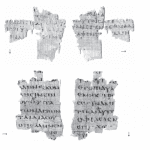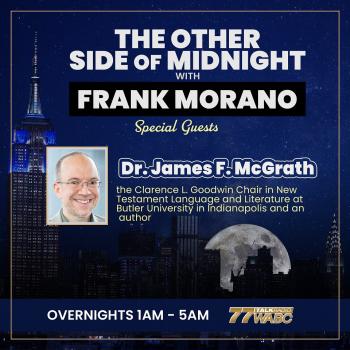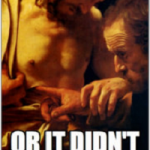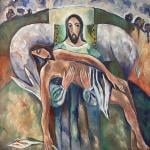Following up on yesterday’s post, I remembered a blog post that I wrote more than a decade ago, about things that I had learned from the experience of living and teaching in Romania, which relate directly to areas that I research and teach. One of them was rumors. Looking back now I regret having given the impression that the spread of rumors was something specific to that culture or absent from my own – we have seen very clearly in recent years (and probably in recent minutes) how uncritically people in the United States believe and spread misinformation. Nonetheless, because it connects so precisely with my blog post from yesterday, and because it has been more than a decade since I wrote it, I thought I would share part of it again:
On a recent visit to Romanian relatives in Canada, one of them told me how Tim Hortons coffee had been laced with tobacco to make it more addictive. I immediately spotted it as an unreliable rumor (it had all the signs), as a quick search at Snopes confirmed for me today. Romania is a remarkable place when it comes to rumors – perhaps it was the lack of reliable news during the communist era, but the rumor mills seem to work as effectively and as rapidly as ever, in the present as in the past.
An important question that needs to be asked by anyone working on the historical study of Jesus is whether our information constitutes anything other than rumor, or more strictly speaking “legend” (which may be defined as rumor that persists for longer periods – just as we speak of “urban legends” for persistent rumors today). Those seeking a more mundane occurrence behind the miracle stories have long suspected that stories such as that about Jesus walking on the could have arised through a misunderstanding of a story about him walking beside the sea (since it is the same preposition in Greek). The version of the story in John chapter 6 lends plausibility to this – the focus there is on the rapid end of the storm and arrival at the other side once they have seen Jesus. But as in all cases of rumor transmission, while it can be asserted that there is often a historical core, studies show clearly that any original piece of reliable information gets obliterated in the transmission process, or at least obscured so badly as to be unrecognizable. The point, in the end, is that rumors circulate and we cannot know what basis, however slim, there may have been in history, or what it may have looked like.
One may think of the allusion in the Book of Revelation to the return of Nero from the dead, the beast whose “deadly wound was healed”. Roman authors from this period show just how widely such rumors were believed, and the chaos that ensued. While even today news reporting, official bulletins, television and the internet do not always succeed in stemming the tide of rumors, imagine in the situation in the ancient world where no such ‘reliable’ sources existed. If at least one New Testament author believed the Nero rumors, why would we expect them to not also provide us similarly rumor-based information elsewhere?
Realizing how unreliable the information that circulates among the populace is – whether the subject is science, politics, religion or coffee – makes me very concerned about the reliability of the New Testament’s information – perhaps more so than any historical critical investigation could. Nevertheless, books such as Allport & Postman’s Psychology of Rumor, Vansina’s Oral Tradition As History, and DiFonzo’s Rumor Psychology: Social And Organizational Approaches, all confirm that oral reporting can at times be verified, but can often obscure the truth rather than inform us about it. One of my current research projects is to identify instances of texts reflecting oral transmission of a common saying and to seek to apply the insights of the aforementioned studies, as well as my own experiences.
For Christian faith, questions such as these are profoundly disturbing. It is easy to imagine how a misunderstanding could generate a story such as that of Jesus’ empty tomb. The practice of secondary burial was a distinctively Jewish one, and it is possible to imagine how a Gentile Christian pilgrim visiting Jerusalem could have misunderstood about this and sparked off the rumor that eventually became the empty tomb story found in Mark. This is not to suggest that Christian faith in the resurrection was based only on a rumor – Paul had such faith based on visionary and other experiences, and he doesn’t mention the empty tomb, and so the rumor – if there was a rumor – might have arisen later. My point is simply that it seems impossible to ever be certain, using the tools of historical study, that something like this scenario (misunderstanding leading to rumor) did not occur. As so often, historical study’s most troubling questions for religious believers do not relate to its disproving of things they hold dear, but of its inability to prove those things that are, for many Christians, of central importance – the resurrection and other stories of the miraculous being a case in point.
Click here to read the rest of that post from 2007, and find out what else I learned from living in Romania that was relevant to biblical studies. And please do share your thoughts on this topic, especially (but not only) if you were reading this blog back then and may have given the matter more thought in the intervening decade!













